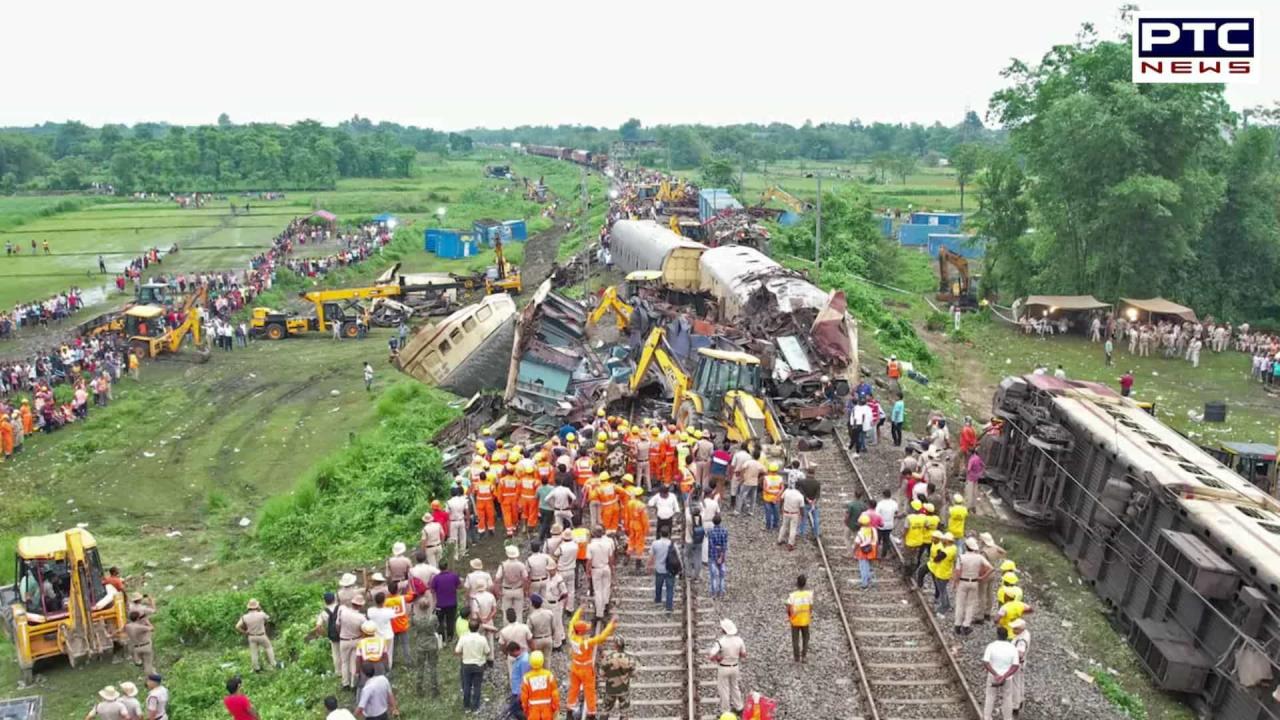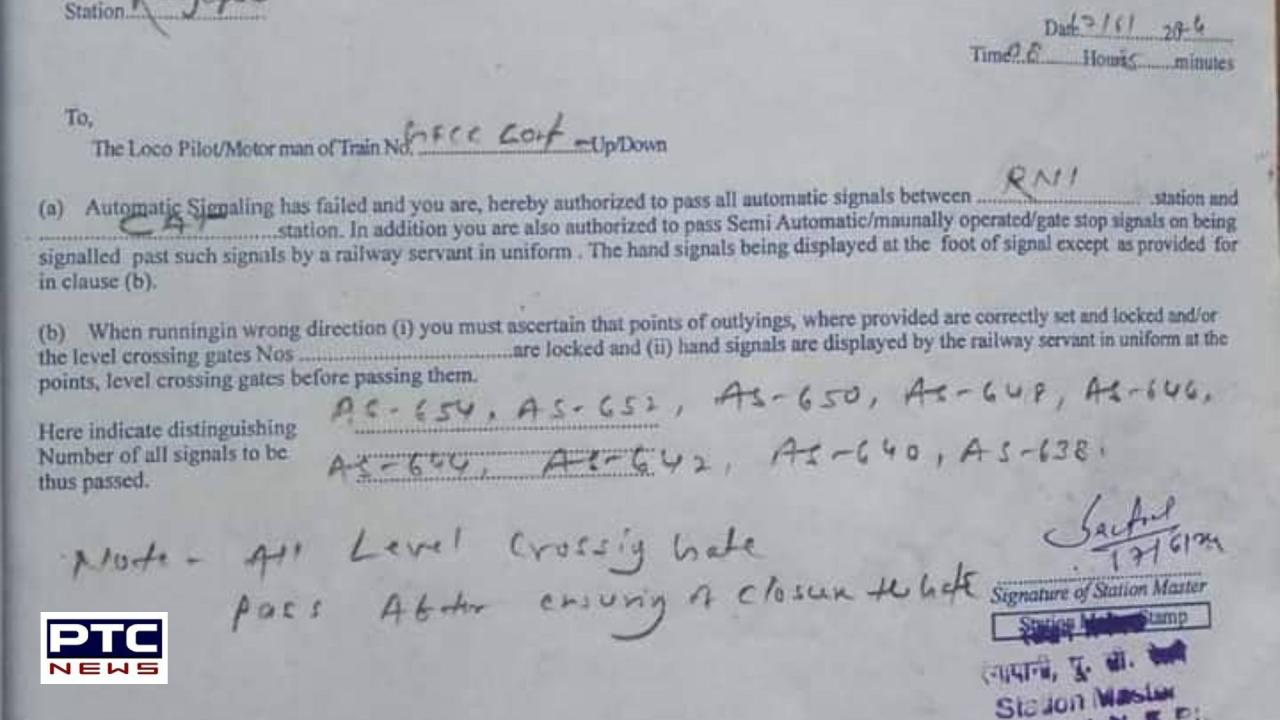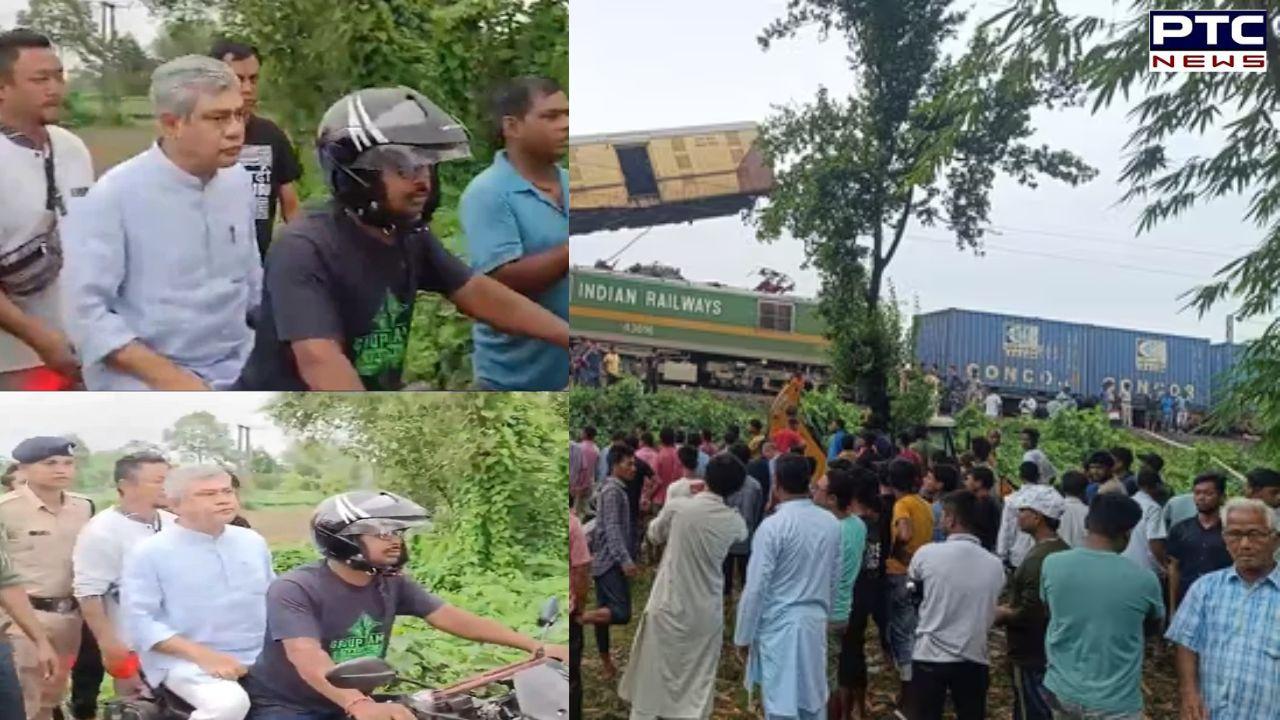What caused the Kanchanjunga train accident; human error or signal failure?
West Bengal Train Accident: According to the Railway Board's preliminary report, the freight train was exceeding speed limits when it crashed because it was running on a faulty automatic signaling system.

PTC News Desk: Nine persons were killed and 41 injured when a goods train struck the Kanchanjunga Express on Monday morning while it was traveling from Agartala, Tripura, to Sealdah, Kolkata, near Rangapani station, close to New Jalpaiguri. Initial results indicate that both signal failure and human error may have had a role.
According to the Railway Board's preliminary investigation released on Monday, the freight train collided with the Kanchanjunga Express on Monday while exceeding speed limits due to an automated signaling system malfunction. Railways have refrained from commenting on this matter.
 In the event that the automated system malfunctions, railroad procedure requires a documented authorisation, or TA 912. Because of the signaling malfunction, this document permits train drivers to cross all red lights as long as they follow strict safety protocols. TA 912 (seen below) had been granted to the freight train as well as the Kanchanjunga Express.
In the event that the automated system malfunctions, railroad procedure requires a documented authorisation, or TA 912. Because of the signaling malfunction, this document permits train drivers to cross all red lights as long as they follow strict safety protocols. TA 912 (seen below) had been granted to the freight train as well as the Kanchanjunga Express.
Railway rules stipulate that drivers must stop for one minute at each malfunctioning signal and proceed at a maximum speed of 10 kmph. This regulation is known as TA 912. In addition, if the preceding train hasn't cleared the signal, they need to keep a 150-meter distance in order to provide enough stopping time. The goods train driver in this instance, however, disregarded these important guidelines.
After crossing nine automatic signals with TA 912, the Kanchanjunga Express halted in anticipation of receiving new approval to continue.
Permission to Ignore Red Signals
The Railway Board stated that because of the malfunctioning automatic signalling system, the driver of the goods train was permitted to pass all red lights between the railway stations of Rangapani and Chattarhat. But the train's speed was higher than what was allowed in these circumstances.
The Rangapani station master gave the goods train driver a TA 912, allowing the train to travel over nine red signals. The automated signaling system had been down since 5:50 am on the day of the accident, thus this authorization was essential.
At 8:42 in the morning, the goods train GFCJ left Rangapani and at 8:55 in the morning, it collided with the halted Kanchanjunga Express. The guard's coach, two package coaches, and the passenger train's general seating coach were all derailed as a result of the incident. It was discovered that the freight train's driver, who was among the deceased, had broken the law by exceeding the required speed limits, which caused the collision.
During a signaling malfunction, the Kanchanjunga Express driver followed the safety protocols. He drove at ten kilometers per hour, pausing at every red light for a minute. On the other hand, the driver of the goods train crashed with the passenger train by driving faster than was allowed.

Failure of the Automatic Signaling System
The driver was authorised to pass all automatic signals between Rangapani and Chattarhat, regardless of whether they were red or caution signs, according to the TA 912 authority letter, which also said that the automatic signalling system had malfunctioned.
According to the Railway Board, a train should halt for one minute during the day and two minutes at night when it encounters a red light. After that, it should move very carefully, not exceeding 15 kmph in good visibility and 10 kmph in poor visibility.
Also Read: Pannun plot: Indian accused pleads not guilty in US court; first visuals released
The disastrous collision occurred because the freight train went faster than what was allowed in spite of these limitations. The Railway Board has not revealed the precise speed at which the cargo train was moving.
By late afternoon, rescue operations were over, but work to remove the derailed coaches and resume rail service was still ongoing. After treating a number of injured passengers, the North Bengal Medical College and Hospital had 41 hospitalized patients, nine of whom were in serious condition.
Official Reaction
The investigation into the accident's cause was started by the Commissioner of Railway Safety (CRS). During his visit, Railway Minister Ashwini Vaishnaw announced compensation for the relatives of the fatalities and oversaw relief efforts. Families of the deceased will receive Rs 10 lakh, severely injured people Rs 2.5 lakh, and people with slight injuries Rs 50,000.
In addition to expressing his sympathy to the victims, Prime Minister Narendra Modi prayed for the injured parties' speedy recovery.
"We are saddened by the West Bengal train catastrophe. Sending sympathy to those who have lost a dear one. I hope the wounded people get better as soon as possible. spoke with representatives and assessed the circumstances. under order to help those affected, rescue procedures are under progress. PM Modi stated on X that the Railways Minister, Shri @AshwiniVaishnaw Ji, is also en route to the accident scene.
Mamata Banerjee, the chief minister of West Bengal, blasted the Railway Ministry for not prioritizing passenger safety and for not successfully putting the anti-collision system into place. She claimed that the railroads prioritized raising fares above enhancing security protocols.
"The railroads no longer have any parental figureship. The old magnificence is gone, but the ministry remains. The only thing being done is cosmetic; passenger amenities are unimportant to them. They are solely interested in raising the fare, she stated. "All you'll see them do is talk big." They also don't look after the technical, safety, security, and railroad officers. I'm with the officers and staff of the railway."
Governor CV Ananda Bose advocated for treating victims first instead of assigning guilt.
Also Read: Weather Update: IMD issues 'red' alert for heatwave as capital sizzles
